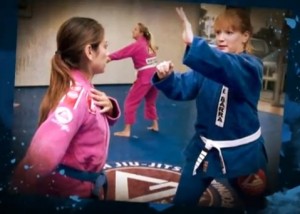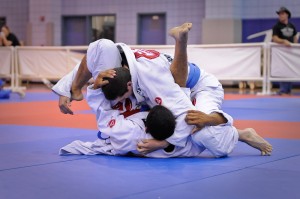A 4 Point Checklist For Troubleshooting a Position
When learning a new position in jiu-jitsu, initially one must learn the proper mechanics. The student must decipher “My right hand grips where?” and try to understand the direction of the movement. However, many can become frustrated when a basic technique just doesn’t seem to work for them!
The basic techniques in brazilian jiu-jitsu WORK! If a basic technique seems ineffective for you, do not dismiss it as a worthless technique, instead delve a little deeper to see what you might be missing.

Here is a checklist of 4 questions to help you troubleshoot why a technique isn’t working.
1) Each part of your body has a role in the technique
 Many times when I am teaching a fundamentals class and I observe a beginner learning a new technique, they will be focused on the primary grips required to execute the movement.
Many times when I am teaching a fundamentals class and I observe a beginner learning a new technique, they will be focused on the primary grips required to execute the movement.
Yet, in focusing on the most visible aspect of the movement, they will completely forget their other limbs and leave a free hand waving in the air without a grip or a foot casually placed on the mat instead of posting on the mat to preserve their base to protect against being swept and drive their weight into the opponent.
Your body must work as a whole to maximize any technique – especially against a larger opponent. You can not afford to have part sof your body inactive.
Ask yourself in each position : “What is the proper and most efficient use of each part of my body in this position?”
2) Where to focus your weight
In any of the top positions in bjj – especially when trying to pass the guard or hold an opponent in side control for example – it is imperative to apply your bodyweight to your opponent’s body to make it more difficult for them to move their hips and escape.
Most of us have experienced an advanced and much lighter opponent whose bodyweight seemed to miraculously magnify when they have top position, turning a 150 lb. black belt into a 250 lb. rock onto top of you!
How does a lighter practitioner make themselves feel so heavy? They will know precisely which small area of the opponents body to which they need to apply their force. Secondly, they will use their posted foot to actually drive off of the mat, amplifying and transmitting their weight into the body of their opponent.
In contrast, while in top side control, many less experienced bjjers will rest the weight of their body on their knees on the mat – instead of applying that weight to their opponent. Ask yourself : “What specific part of my opponent’s body should I be applying my bodyweight to in this position?”
3) Action / reaction
 While in Brazil training, I had a private lesson with a 5th degree black belt and I asked about positions that I already had a solid understanding of in my own game.
While in Brazil training, I had a private lesson with a 5th degree black belt and I asked about positions that I already had a solid understanding of in my own game.
The most significant thing that I came away from that private lesson with was how the key to catching so many of the basic, well known techniques was to set up the move with a fake – and then using the opponent’s defensive reaction to create the opening you need for your movement.
This action – reaction concept is fundamental to the arts of judo and jiu-jitsu. Even people who have never stepped on a bjj mat in their lives are familiar with the martial arts concept of “using the opponent’s force against them.” One pictures a tiny old martial arts master redirecting the force of a much bigger attacker and tossing him effortlessly to the ground!
Using the simple example of a sweep, the effectiveness of the sweep is doubled by faking the opponent to the opposite side of where you wish to sweep them and then using their instinctive reaction to unbalance them and catch them in the sweep. Ask yourself : “What movement if I fake, will cause my opponent to react in the direction of what I need for my true attack?”
4) What is the “battle” in this position?
In any position on the ground each opponent is trying to counter and effect his own strategy against the opposite goals of the opponent. Understanding the essence of the “battle” in any position allows you to anticipate what your opponent will try to do and prevent their escape even before they get started.
Let’s look at the example of the half guard: There are many different half guard passes and sweeps but the essentials remain the same for the position.
The person on top is trying to:
1) control the bottom person’s head with a cross face
2) obtain an under hook
3) flatten the bottom person out and apply bodyweight
The person on bottom is looking to achieve the opposite.
The person on bottom is trying to:
1 ) prevent the opponent from gaining control of their head
) prevent the opponent from gaining control of their head
2) pummel for the under hook and threaten to go to opponent’s back
3) stay on their side and keep top person’s weight off of them
Each of the main ground positions in bjj will have opposing strategies and a black belt professor can help you troubleshoot a position with a simple piece of advice such as “You need to keep him flat.”
Ask yourself : “What is my opponent trying to do in this position and how can it shut it down?”
The next time a position seems to lose its effectiveness for you, use this checklist to help troubleshoot and get the technique working for you once again.
Credits: Mark Mullen
GB Black belt from GB Calgary, Canada
Twitter: @MarkMullenBJJ
